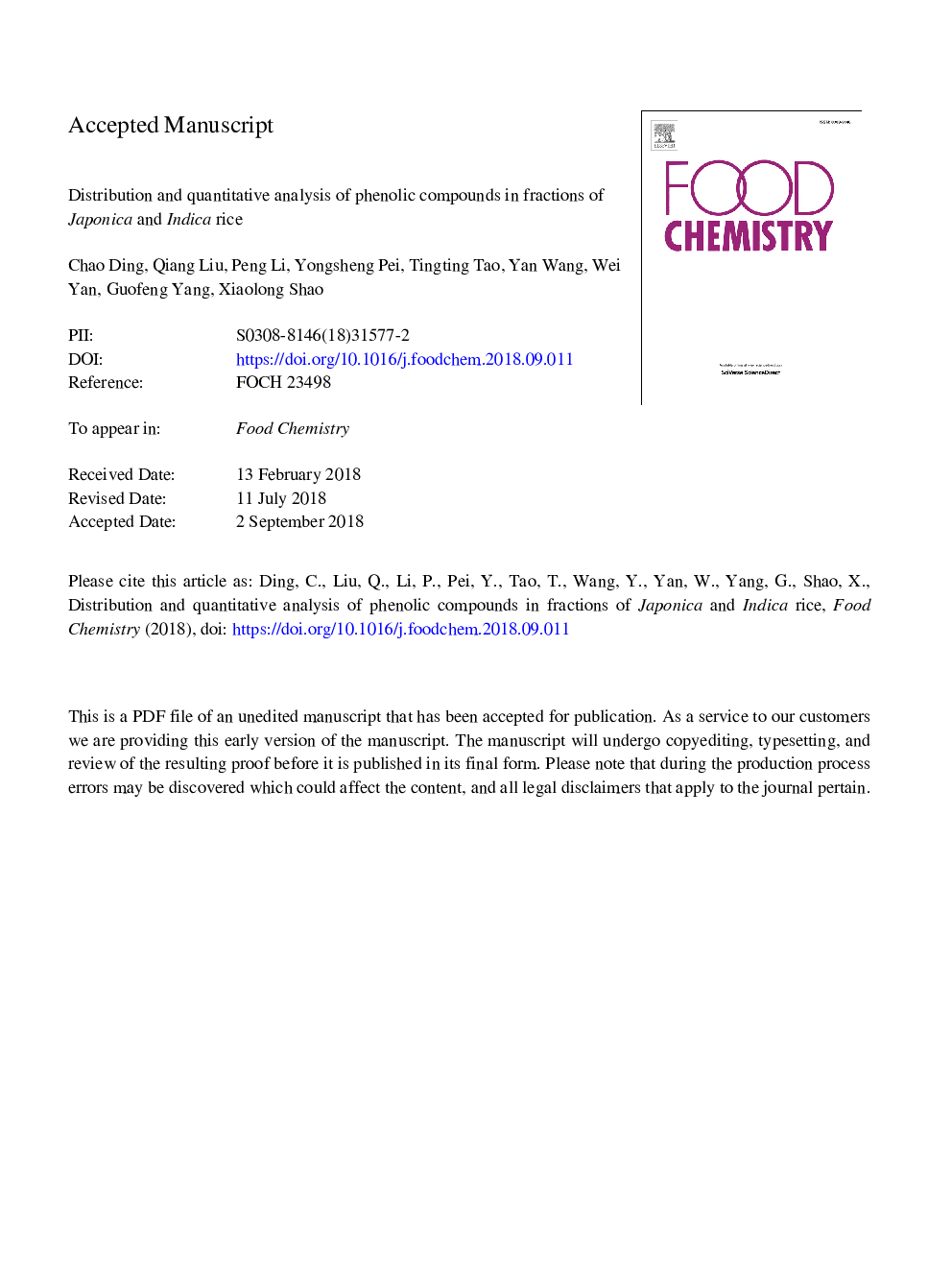| Article ID | Journal | Published Year | Pages | File Type |
|---|---|---|---|---|
| 10140793 | Food Chemistry | 2019 | 30 Pages |
Abstract
Utilization of phenolic compounds in rice husk and bran is important for improving the functionality of rice by-products. Eight rice varieties planted in different area were selected to analyze the phenolic compounds distribution of fractions in Japonica and Indica rice by using UPLC-MS method. A total of 12 phenolic compounds were identified in all rice varieties. Ferulic acid, gallic acid, protocatechuic acid and syringic acid were the dominant phenolic compounds in rice bran, while p-Hydroxybenzaldehyde was the main phenolic compounds existed in rice husk (14.46-23.72â¯Âµg·gâ1). Bran and husk fractions provide more than 90% of phenolic compounds and antioxidant activity of whole rice. Regardless of the planting environmental effects, Japonica rice has significant higher phenolic compounds and antioxidant activity than Indica rice (Pâ¯<â¯0.05). Therefore, it can be concluded that the distribution of phenolic compounds were strongly correlated with the rice varieties and fractions.
Keywords
Related Topics
Physical Sciences and Engineering
Chemistry
Analytical Chemistry
Authors
Chao Ding, Qiang Liu, Peng Li, Yongsheng Pei, Tingting Tao, Yan Wang, Wei Yan, Guofeng Yang, Xiaolong Shao,
